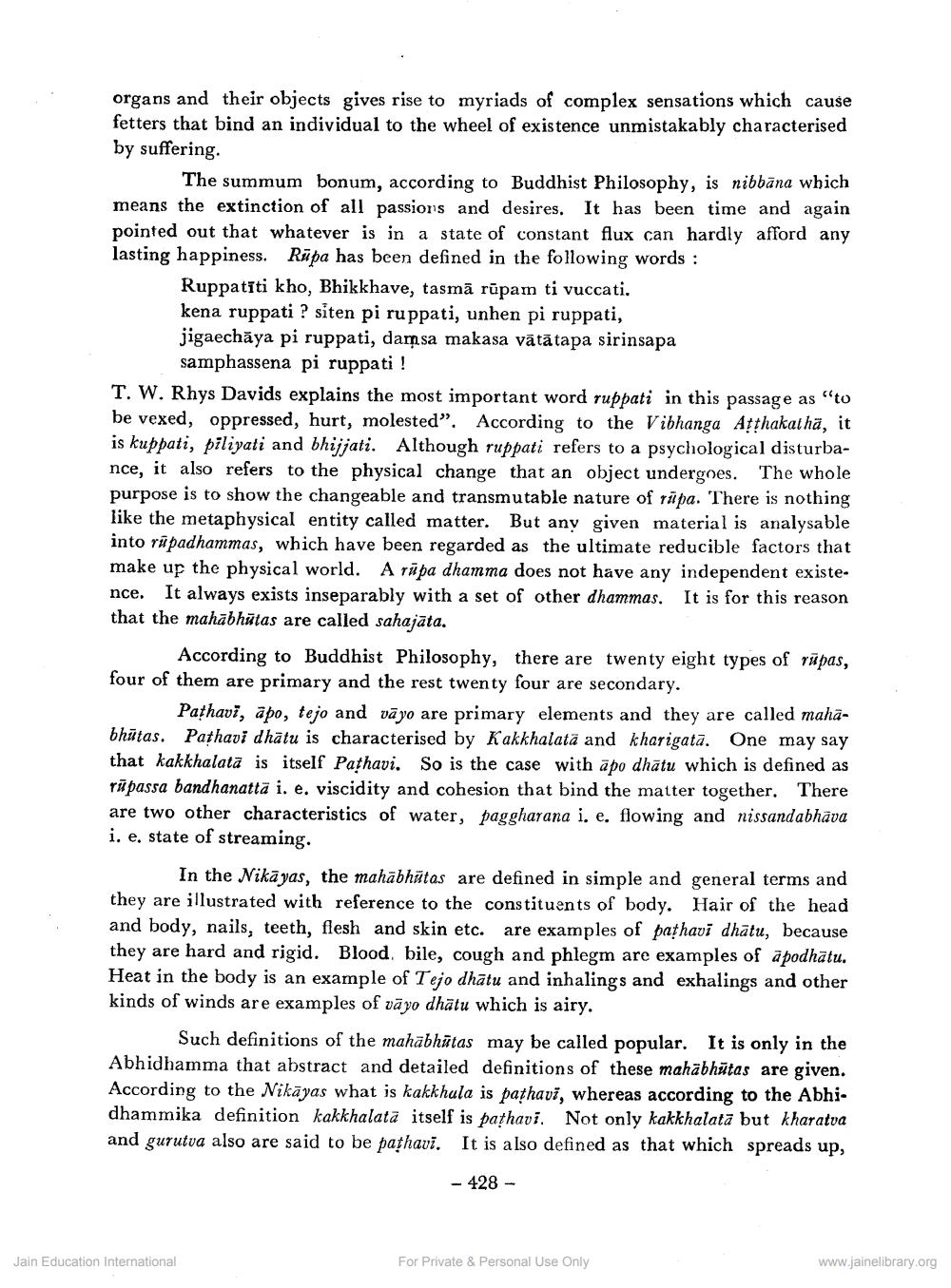Book Title: Concept of Matter in Lee Buddhism Author(s): Angraj Chaudhary Publisher: Z_Kailashchandra_Shastri_Abhinandan_Granth_012048.pdf View full book textPage 3
________________ organs and their objects gives rise to myriads of complex sensations which cause fetters that bind an individual to the wheel of existence unmistakably characterised by suffering. The summum bonum, according to Buddhist Philosophy, is nibbāna which means the extinction of all passions and desires. It has been time and again pointed out that whatever is in a state of constant flux can hardly afford any lasting happiness. Rūpa has been defined in the following words : Ruppatiti kho, Bhikkhave, tasmā rūpam ti vuccati. kena ruppati ? siten pi ruppati, unhen pi ruppati, jigaechāya pi ruppati, daņsa makasa vātātapa sirinsapa samphassena pi ruppati ! T. W. Rhys Davids explains the most important word ruppati in this passage as "to be vexed, oppressed, hurt, molested”. According to the Vibhanga Atthakatha, it is kuppati, piliyati and bhijjati. Although ruppati refers to a psychological disturbance, it also refers to the physical change that an object undergoes. The whole purpose is to show the changeable and transmutable nature of rūpa. There is nothing like the metaphysical entity called matter. But any given material is analysable into rūpadhammas, which have been regarded as the ultimate reducible factors that make up the physical world. A rūpa dhamma does not have any independent existe. nce. It always exists inseparably with a set of other dhammas. It is for this reason that the mahābhūtas are called sahajäta. According to Buddhist Philosophy, there are twenty eight types of rūpas, four of them are primary and the rest twenty four are secondary. Pathavi, apo, tejo and vāyo are primary elements and they are called mahābhūtas. Pathavi dhātu is characterised by Kakkhalata and kharigatā. One may say that kakkhalatā is itself Pathavi. So is the case with apo dhātu which is defined as rūpassa bandhanatta i. e. viscidity and cohesion that bind the matter together. There are two other characteristics of water, paggharana i. e. flowing and nissandabhāva i. e. state of streaming. In the Nikā yas, the mahābhūtas are defined in simple and general terms and they are illustrated with reference to the constituents of body. Hair of the head and body, nails, teeth, flesh and skin etc. are examples of pathavi dhātu, because they are hard and rigid. Blood, bile, cough and phlegm are examples of apodhātu. Heat in the body is an example of Tejo dhātu and inhalings and exhalings and other kinds of winds are examples of väyo dhatu which is airy. Such definitions of the mahābhūtas may be called popular. It is only in the Abhidhamma that abstract and detailed definitions of these mahābhūtas are given. According to the Nikāyas what is kakkhala is pathavi, whereas according to the Abhi. dhammika definition kakkhalatā itself is pathavi. Not only kakkhalata but kharatva and gurutva also are said to be pathavi. It is also defined as that which spreads up, - 428 - Jain Education International For Private & Personal Use Only www.jainelibrary.orgPage Navigation
1 2 3 4 5 6 7 8
